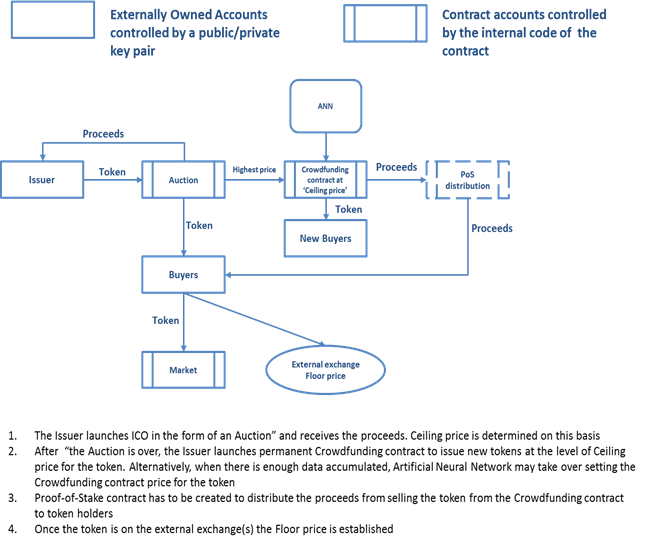05.31.2018
Anton Galenovich, PhD
Founder, DAO IPCI
Thinking about blockchain solution for the social costs problem[1] brings about some basic ideas on ‘blockchain avatar of market economy’ in general.
Fundamental concept for issuance of independent currencies is that artificial state monopoly for money emission suppressing other currencies, is harmful in respect of inflation and unemployment, restrictions on movement of people money and goods, social conflicts, unrestrained budget expenditures, economic nationalism. Government monopoly for money should be abolished. From the very beginning blockchain technology and its first manifestation, Bitcoin, brought to life a simple though disruptive concept: that anyone can issue his own global money with minimum transaction costs.
Actually, monopoly for money by the governments has already ended, and denationalization of money[2] has begun. Suppression by the governments of currencies issued by entities, persons or even machines, is hopeless, does not make sense and will eventually stop. At the end of the day, it is up to person himself to choose which of the currencies to use for each specific trade or to store value. On the other hand, it is up to the Issuer to choose the scheme of issuance of “his money”.

Market is the core element for the currency. You might want to consider what markets your currency is going to be used on. Is it only for external exchanges or you would want to create your own market? Other elements like issuance, verification or retirement of asset-based, or service-based tokens provide for the quality, traceability of market instruments.
There is a dominant economic idea that the market supply, demand and turnover determine the amount of the currency needed. However, the fundamental parameter still is the market demand for the currency. “The state of the market at any instant is the price structure, i.e., the totality of the exchange ratios as established by the interaction of those eager to buy and those eager to sell.”[3] Analogue to quantum mechanics, there is no seamless process of ‘dynamic balancing’. Individual trade acts as ‘quantum’ of market activities. So some instrument to track the demand for the token is needed.

However popular “one-time” sale of the limited amount of tokens representing the currency is not the only option. Proof-of-Work algorithms to issue currency with all the benefits, unfortunately, are not a market feature. Proof-of Stake also do not fully reflect market demand for the token. Alternatively, a mechanism based on market demand for the token may be created. For this purpose initial crowd-offering might be targeted at understanding the initial demand and initial level of price acceptable for different buyers however unpredictable those might be. For example to understand the potential Ceiling price for the currency. A permanent token issuance mechanism (contract) can be launched on this basis. For example, a contract that offers issuance of new tokens at the Ceiling price. If the proceeds from the contract go to previous Buyers, their interests would be sustained. When there is enough data from the smart-contract accumulated, Artificial Neural Network may take over setting the contract price for the token issuance. This way the Issuer provides options to the Buyers whether to use the token on the Market to buy goods and services offered, to buy more tokens, to store for the future or to go to an external exchange.
[1] https://medium.com/dao-ipci/blockchain-incarnation-of-the-coase-paradigm-563f12b0adaa
[2] See Friedrich Hayek, Denationalization of Money, Institute of Economic Affairs, 1976
[3] Human action: a treatise on economics, by Ludwig von Mises, 4th rev. ed., San-Francisco, 1996, p. 258
You may also like:
How to launch your own Environmental Mitigation Program in DAO IPCI?